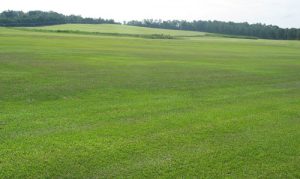Have you noticed patchy areas of yellowing or wilting turfgrass in your yard? Are there areas that are thin and declining? If so, nematodes might be feeding on the roots of your turfgrass.

What are nematodes?
Nematodes are microscopic roundworms. They are common in the sandy soils in Florida. These little animals are approximately 1 mm long and almost invisible to the naked eye. Some are beneficial to plants by helping cycle nutrients plants need to grow. Others are harmful to plants and can weaken or even kill them. Nematodes that harm plants have a tiny needle-like feeding structure called a stylet. The stylet is used to puncture roots to ingest plant fluids. Nematode feeding can directly injure the plant, but they can also make the plant more vulnerable to diseases.

A variety of nematodes can feed on turfgrass. Sting, root-knot, and lance nematodes are some of the most important. Symptoms from nematode feeding can include patchy areas of yellowing and wilting of turfgrass. Some areas may become thin and eventually die if under enough environmental stress. Roots may also be stunted and have fewer root hairs. This makes it more difficult for the roots to take up water and nutrients.
Contaminated sod can bring nematodes to new areas. Once they are present in a yard, it can be very challenging to eliminate them. Very few pesticide options are available for nematode management in residential yards.

How do I know if nematodes are a problem?
It can be difficult to diagnose a nematode problem without the assistance of an expert. If you suspect nematodes might be affecting the health of your turfgrass, you can submit a soil sample to the University of Florida Nematode Assay Lab. For sampling and submission instructions, visit the Nematode Assay Lab website. If you want to learn more about turfgrass nematodes, check out the UF EDIS publication Nematode management in residential yards for additional information.
 0
0
